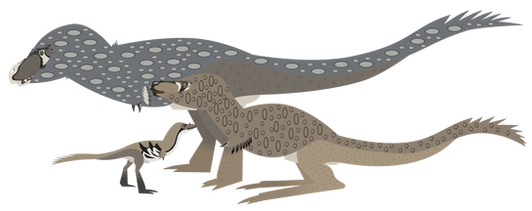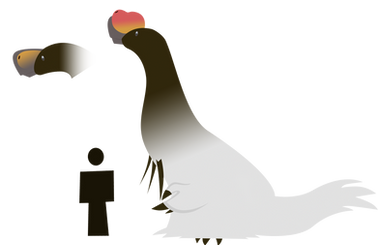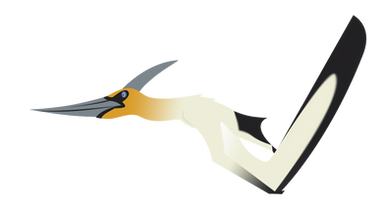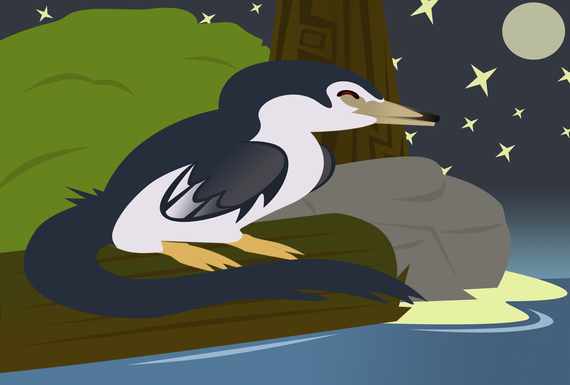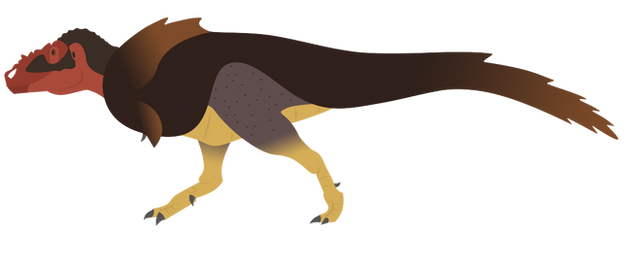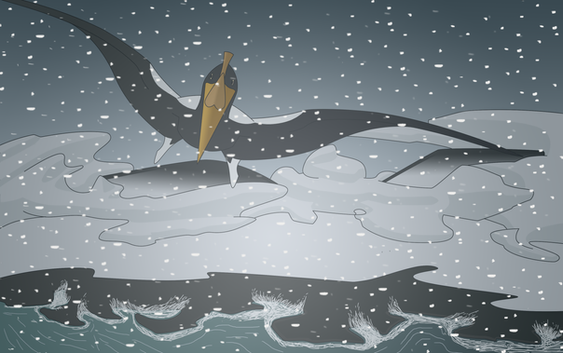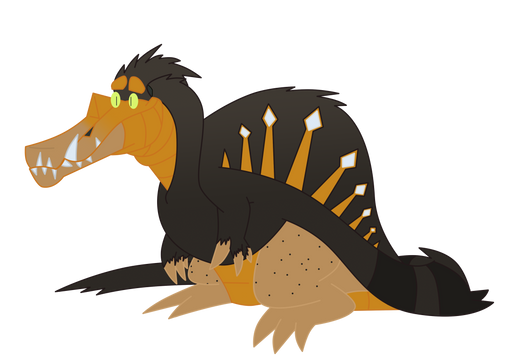HOME | DD
 Krookodile0553 — Marbled Oriya
Krookodile0553 — Marbled Oriya
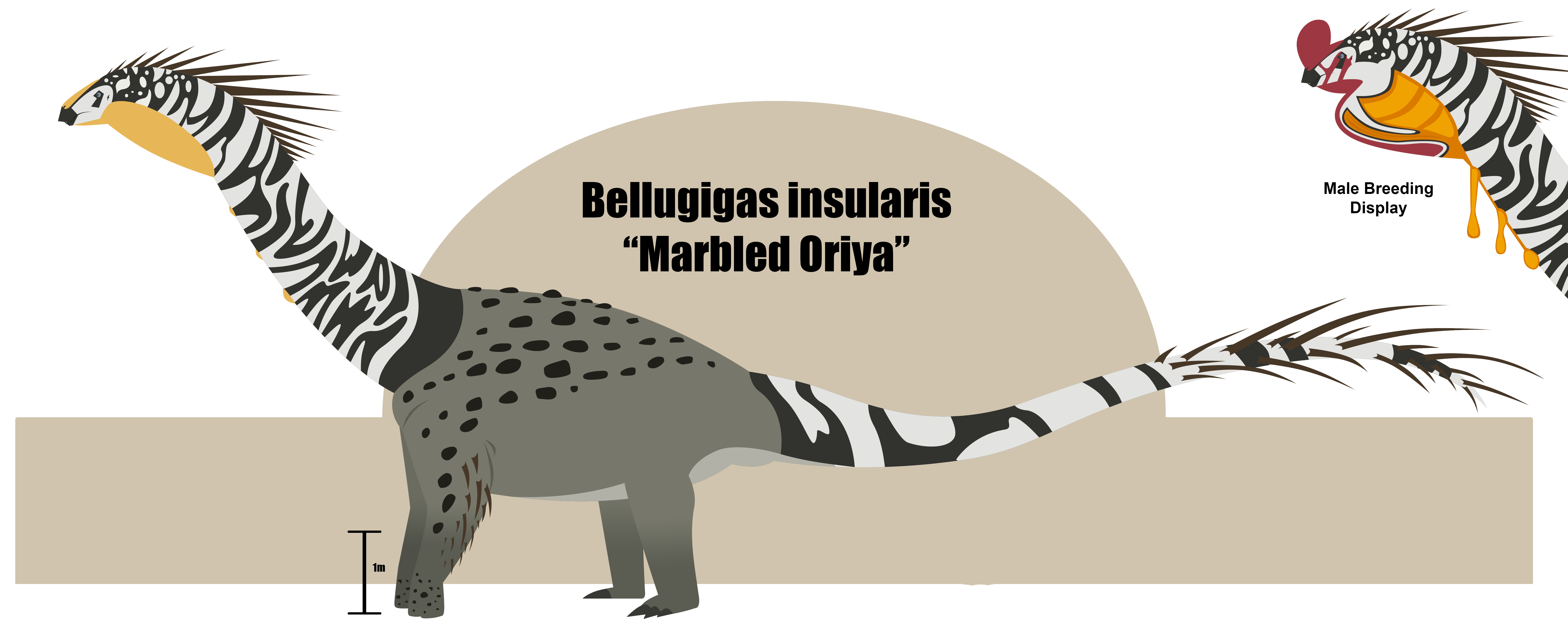
Published: 2013-06-21 18:20:05 +0000 UTC; Views: 1903; Favourites: 26; Downloads: 10
Redirect to original
Description
"As I've recieved a few requests to do Araea's largest resident, I have taken the liberty of giving this Titanosaur Quills, beinge inspired by this restoration of Apatosaurus louisae [link] also, I've made Oriya's more convergent on Macronarians (Longer Fore-limbs/ Shorter tail)"Dubbed Bellugigas insularis during the first formal survey of Araean fauna, the Marbled or Greater Oriya as it is commonly known ("Oriya" is a slight corruption of a Hungarian word for "giant") is a 6-8 ton titanosaurid sauropod. They are indisputably Araea's largest animal as well as one of the most visually striking. Oriyas dwell primarily in the mixed grassland/scrub regions, arid woodland, and north into the lowlands of Araea's densely forested zones where they use their long necks to feed on food items out of the reach of most other herbivores. Oriyas are herd animals and groups frequently make long migrations between feeding areas.
The bold coloration and inflatable display organs allow Oriya to communicate visually at long distances. Both sexes have these organs and can "flush" them to some degree to alter their tint to convey subtle visual messages. They also serve as resonating chambers to amplify the oriya's variety of deep vocalizations. Males Oriya are more vividly hued, as color is an important part of oriya courting behavior and seems to be one of the criteria females use to judge a potential suitor's fitness.
Female Oriya typically lay their large clutches of eggs in sandy soil, usually in the same breeding ground in which they themselves hatched. Male Oriya generally arrive at the breeding grounds ahead of the females to jockey for position amongst themselves and establish displaying areas, with the dominant males gaining access to the best locations and thus enjoying the greatest breeding success with the arriving females. These nesting grounds are typically located on the periphery of densely vegetated areas. After the females depart some adult males often remain in the area around nesting grounds to discourage potential egg predators. Hatchings are often largely synchronized, the young swarming from their nests en masse to minimize the odds of any one individual being targeted by a predator. The young are precocial and upon digging out of their nests immediately make a break for cover where their small size and cryptic coloration will help conceal them from the gauntlet of native and introduced predators that feed on them. The bony ossicles on the young's back and flanks provide some additional measure of protection against smaller assailants, though camouflage is still their best defense. Mortality among the young animals tends to be very high, from the moment they hatch there are other creatures waiting to eat them. When young Oriya reach a certain size they will leave their dense undergrowth habitat and join herds of adults. Younger animals are typically accepted into herds without much issue however they are not directly defended by the adults. Simple proximity to the large aggressive adults is their best defense as adult Oriya are extremely intolerant of predators and more then capable of driving them off. As it ages, the spotted camouflage pattern fades somewhat, however it retains it's bony ossicle armor. Healthy adult oriya have no natural predators so their retention of armor is somewhat puzzling. Some Araean cryptozoologists have postulated that this may indicate a predator far larger then any known species may still exist undiscovered somewhere in Araea's vast wilderness, or perhaps more plausibly, may have only recently gone extinct.
Oriya are a popular big game animal among Araea's wealthy upper class, however hunting them can be a dangerous proposition. They are difficult to bring down and very prone to counterattacking when wounded or spooked. Their fastest gait is a rather elephantine running-walk, but this has proven fast enough to run down human hunters who have dared to get too close. The looming shape of 6 or 8 tons of enraged charging sauropod is the last thing many Araean hunters have seen before being completely pulverized...
Edit: "Realized I made it too small per scale...
